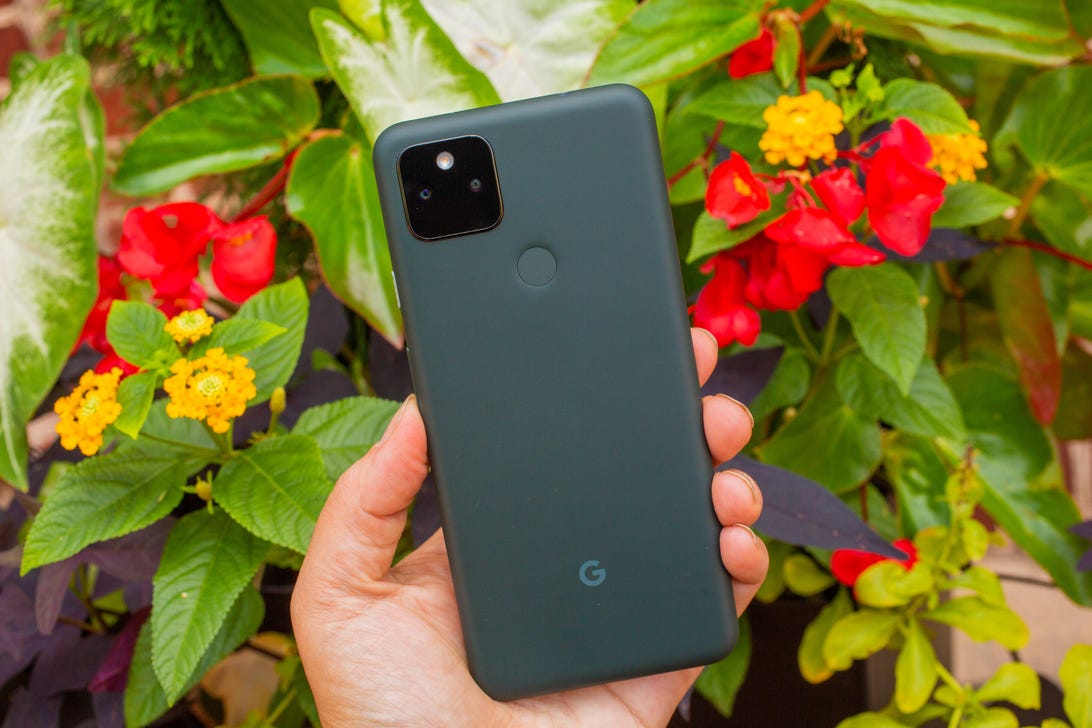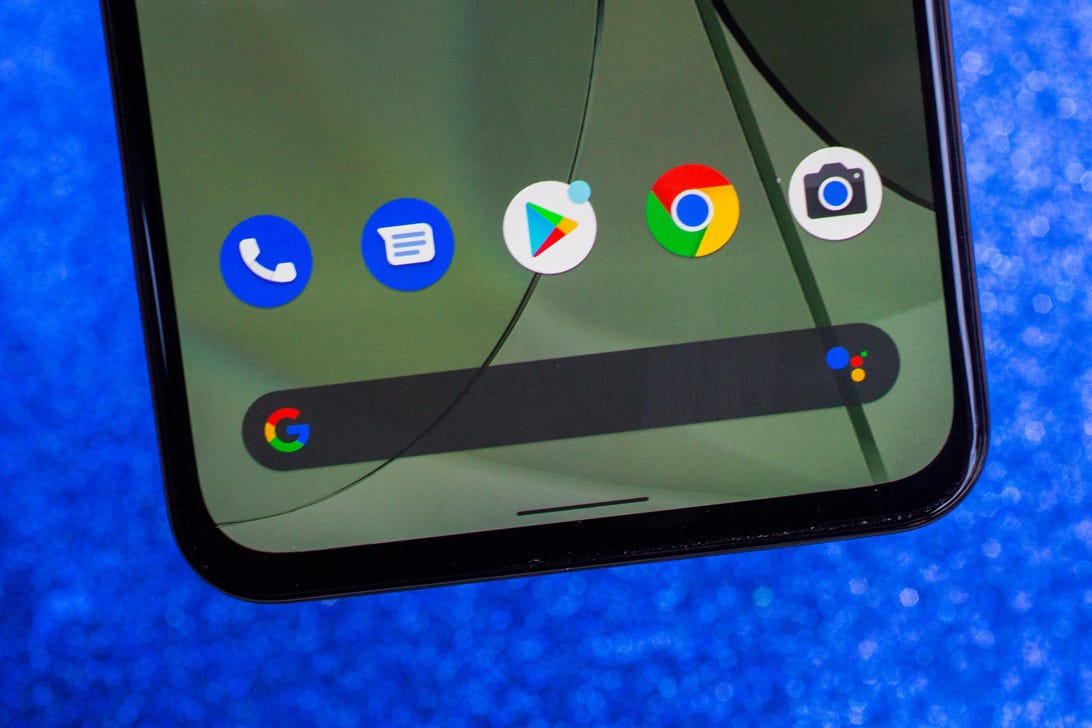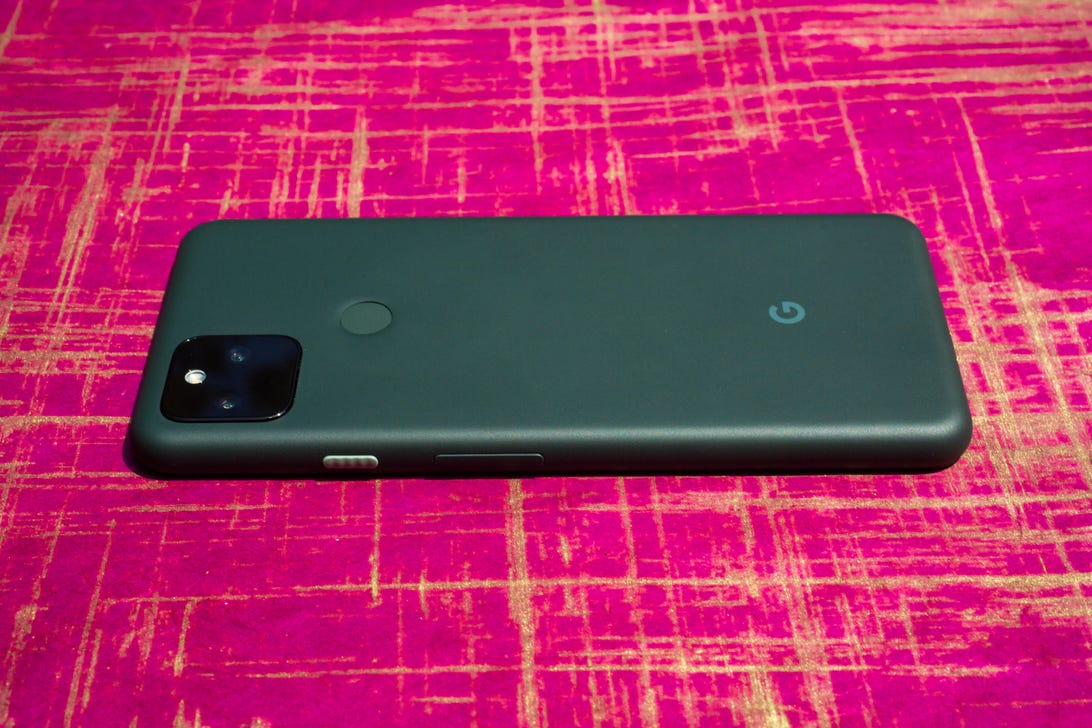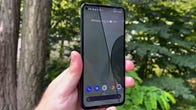
Google unveiled its Pixel 5A midtier phone.
Sarah Tew/CNETGoogle on Tuesday unveiled its Pixel 5A, a $449 5G device the search giant hopes will lift sales of its struggling branded phone line. That goal, however, will be a challenge because the midtier phone will be available through limited channels and in just two countries, the US and Japan.
The new phone is part of Google's A series, a budget-conscious line that does away with the bells and whistles of flagship models, like the sleek Pixel 6 that was introduced earlier this month to compete with premium phones made by Apple and Samsung. Instead, the 5A will compete in a brutally competitive midtier market, occupied by the likes of OnePlus, Motorola and Samsung's A-series line.
Read more: Google Pixel 5A with 5G review: Snappy performance for $449
Google's phone for the masses, however, won't be available to the masses. The Pixel 5A will be sold only in the US and Japan, which Google disclosed earlier this year. In the US, the phone will be sold through Google's online store, as well as its Google Fi wireless carrier. That marks a first for the search giant, which this year is ditching traditional carriers for sales of the A series. Last year's 4A, for example, was sold through Verizon. (The 5A will come unlocked and will work on all major networks, including Verizon, AT&T and T-Mobile.)
Google pinned the narrow release on the COVID-19 pandemic, which caused bottlenecks for key components industrywide. Earlier this year, false rumors even circulated that the Pixel 5A had been canceled altogether due to the constraints.
"COVID has created some challenges for the global supply chain, in particular silicon shortages," Brian Rakowski, vice president of product management for Pixel, said in a press briefing last week. "As a result, we'll be limiting our rollout to select channels."

The Pixel 5A has limited availability because of supply chain issues.
Sarah Tew/CNETBefitting the muted launch, the phone comes in a single color, called "Mostly Black" in Google parlance, a result of the constrained supply chain, Rakowski said.
Like all phones in Google's A series, the 5A is a pared-down version of the previous year's premium device. It sports a 6.34-inch display that stretches across the front of the device with a holepunch camera at the top left corner. It has an 8-megapixel front camera. On the back, it has a 12-megapixel main camera with an f1.7 lens and a 16-megapixel ultrawide camera with an f2.2 lens, though the phone processes the ultrawide shots into 12-megapixel JPEGs. The phone is Google's first A-series device to be certified IP67 water and dust resistant.
Struggling Pixel
Despite years of effort, Google hasn't become a major player in the smartphone market even though it makes Android, the world's most widely used mobile operating system. Android powers almost 84% of smartphones shipped globally, according to IDC. Pixel sales have been lackluster for years, a situation Google executives have blamed on fierce competition in a premium phone market dominated by Apple and Samsung.
Challenges selling its well-reviewed high-end phones led Google to create its midtier line two years ago. The less expensive phones have gotten more traction with consumers and helped to lift Google's smartphone business. But it still hasn't been enough to help the brand overall against its competition. In the second quarter of 2021, Pixel owned 0.7% of the US smartphone market, down from 1.3% during the same period a year earlier, according to Strategy Analytics.

Google's new phone comes in one color, called "Mostly Black."
Sarah Tew/CNET"They still haven't gotten to the mainstream," said Bob O'Donnell, principal analyst for Technalysis Research. "I don't think this will be a breakout year for them. It will be a multiyear effort."
Google unveiled the original Pixel phone, its first branded smartphone, in 2016. Before the Pixel, Google had worked with handset makers, including HTC and LG, to manufacture a line of Nexus phones that ran a "stock" version of Android free of bloatware, a derisive term for software that carriers and device makers force onto the phones. A year after Pixel's debut, Google shelled out $1 billion in a deal with HTC to hire thousands of its engineers to work on Pixel and other Google hardware devices.
The goal wasn't necessarily to become a market leader or make money. Instead it was a showcase for Google software and how hardware hardware makers could optimize devices to take advantage of it. Many of the most popular models, like 2013's Nexus 5 for $349, aimed at both affordability and quality.
Google's midtier A-series reflects the ethos of the old Nexus model. Without availability, however, the effort could be foiled this year.
Article From & Read More ( Google hopes Pixel 5A, a midtier 5G phone, will lift sales despite limited availability - CNET )https://ift.tt/3y0Gasq
Bagikan Berita Ini















0 Response to "Google hopes Pixel 5A, a midtier 5G phone, will lift sales despite limited availability - CNET"
Post a Comment